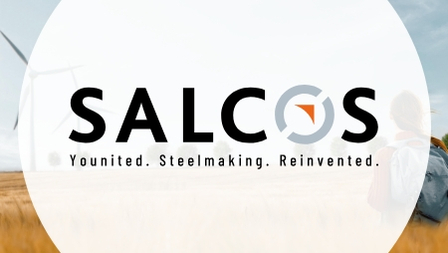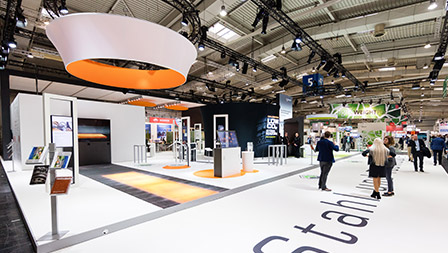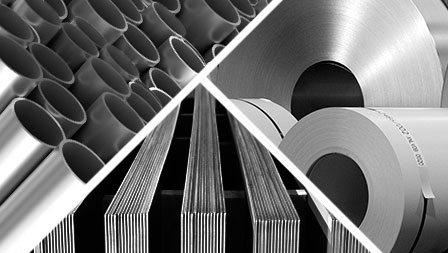Glossary
Business and Financial Terms
A
Acquisition
Purchase of a company or parts thereof.
At equity
Method of capital consolidation with which an affiliated company’s proportionate equity is valued.
C
Capital employed
Sum total of equity, tax provisions (excluding deferred tax) and interest-bearing liabilities. Equity also comprises minority interests.
Cash flow
- from operating activities
Outflow/inflow of liquid funds provided not influenced by investment, disinvestments or financing activities.
- from investment activities
Outflow/inflow of liquid funds from investment/disinvestment activities.
- from financing activities
Outflow/inflow of liquid funds from financing activities: issuance/redemption of bonds, borrowing/repayment of loans, issuance/repurchase of shares etc.
Consolidation
The term for companies that are to be included in the consolidated financial statements.
Convertible bond
Security that entitles the holder to exchange it for a specified number of shares in the issuing stock corporation within a defined period.
Corporate compliance
Compliance with statutory provisions and rules and regulations applicable within the company.
Corporate Governance
The term used to describe responsible corporate management and control. In the interests of improving corporate management, the German Federal Ministry of Justice set up the Government Commission on the German Code of Corporate Governance in 2001. The Commission is tasked with enhancing the transparency of the rules of corporate management and supervision applicable in Germany and with improving the corporate charters of German stock corporations.
Cost of materials
Expenses incurred by raw materials and supplies, merchandise, spare parts, tooling and services outsourced such as energy, contract processing and internal transport costs.
Current assets
Assets that are not intended to serve the business on a permanent basis. Current assets include, for instance, inventories as well as trade receivables.
D
Debt
Provisions, liabilities and deferred income.
Declaration of Conformity
Declaration by the Executive and the Supervisory boards pursuant to Section 161 of the German Stock Corporation Act (AktG) regarding the implementation of the recommendations of the Government Commission on the German Code of Corporate Governance.
Deferred taxes
Tax charges and reliefs likely to arise at a future date as a result of temporary differences between the book value applied to the consolidated financial statements and the tax valuations of assets and liabilities.
E
EBIT (Earnings before Interest and Taxes)
Earnings before taxes, adjusted for net interest.
EBITDA (Earnings before Interest, Taxes, Depreciation and Amortization)
Earnings before taxes, adjusted for net interest and depreciation and amortization.
EBT (Earnings before Taxes) Earnings before deduction of taxes.
Equity
Funds made available to the company by its owners as a cash payment and/or capital investment as well as from retained earnings.
Exposure
Volume exposed to a (specific) risk.
Exposure management
Management of all a company’s payment obligations.
External sales
The proportion of total sales accounted for by transactions with companies outside the consolidated group of Salzgitter AG.
F
Forfaiting
Sale of export receivables without recourse to the previous owners of the receivables (suppliers), generally to a bank.
Free float
That part of the company’s capital stock that is freely traded on the stock market.
H
Holding
Company that holds shares in another company and does not conduct any operational business itself.
I
IAS/IFRS
“International Accounting Standards”/“International Financial Reporting Standards”: Standards to ensure international comparability in the preparation of accounts.
Impairment
Unscheduled depreciation and amortization of assets, such as property, plant and equipment and intangible assets, in the amount by which amortized costs exceed the recoverable amount in the market.
J
Joint Venture
A business venture undertaken in cooperation between and under the joint control of at least two companies which remain independent of one another.
M
Market capitalization
Current market value of a listed company. Market capitalization is calculated by multiplying the share price by the number of shares. Deutsche Börse AG calculates market capitalization for index weighting purposes based on the results of share price and free float.
N
Natural hedging
Term taken from business management to denote companies relocating production capacities in foreign sales markets (countries) in order to avoid currency fluctuations.
Non-current assets
Assets that are intended for use in the long-term operations of the business enterprise. A distinction is made between:
- Property, plant and equipment
Land and buildings, technical equipment and machinery etc.
- Intangible assets
Goodwill/badwill, patents, licenses, development costs etc.
- Financial assets
Shares in affiliated and associated companies, participating interests, securities held as fixed assets etc.
P
Pension provisions
Provisions formed to cover retirement, invalidity and surviving dependents’ pension and benefit commitments. Pension obligations are calculated using the present value of the defined benefit obligations (IFRS) or the going-concern value method (German Commercial Code [HGB]) and valued on the basis of actuarial assumptions and calculations.
Personnel expenses
Expenses incurred by wages and salaries as well as social security, pensions and other benefits. These expenses do not include the interest component in transfers to pension provisions, which is reported as part of the financial result.
Profit and loss transfer agreement (P&L A.)
A company agreement is defined as a profit and loss transfer agreement if one company undertakes to transfer its entire profit to another company (Section 291 I of the German Stock Corporation Act [AktG]). The other contractual partner is required to compensate any net loss for the year arising during the term of the contract (loss absorption pursuant to Section 302 I of the German Stock Corporation Act).
R
ROCE
Return on Capital Employed. Ratio of EBIT to capital employed.
S
Segment sales
Share of overall sales resulting from transactions between companies within the consolidated group but in different business units as well as with companies outside of the group of consolidated companies of Salzgitter AG.
Stakeholders
Shareholders, employees and other groups with connections to the company.
U
Unappropriated retained earnings (also: profit/loss shown on the balance sheet after appropriation to or transfer from reserves)
Profit/loss as shown in the annual financial statements of Salzgitter AG, calculated in accordance with the German Commercial Code (HGB). Dividend paid to shareholders is determined by this result.
V
Volatility
Scope of the fluctuations of an underlying asset (e.g. share price).
Technical Terms
B
Blast furnace
A shaft furnace lined with heat-resistant (refractory) bricks and used by integrated steelworks to smelt pig iron from iron ore.
C
Coating
The application of the coat of zinc, organic material, paint or foil, primarily to improve the resistance of steel sheet to corrosion.
Coke
A reduction agent required in the blast furnace to smelt pig iron out of iron ore. Coke is produced by heating specific types of coal (coking coal) in a coke oven plant under exclusion of air.
Cold rolling
Forming process at room temperature. Cold rolling is used, for example, to turn hot-rolled strip into sheet steel.
Continuous casting
A semi-continuous process for the manufacturing of slabs, blooms and tube rounds from molten steel.
E
Electric arc furnace
Unit in which steel scrap is melted using electricity producing so-called electric steel.
Elements for roofing and cladding
Components produced from profiled surface-coated sheet steel that are used in the construction industry as wall and ceiling elements and for exterior cladding.
F
Flat rolled products
Flat rolled steel products are manufactured by the hot-and cold-rolling of slabs, including other work stages, as necessary. The term refers specifically to sheet steel with a thickness of less than 30 mm used mainly for the automotive and household appliance industries.
H
HFI-welding
Process for creating welds on the basis of electro-magnetic induction.
Hot rolled (wide) strip
Hot rolled and coiled steel strip used as feedstock for cold-rolling or sold as an intermediate product (e.g. as wide strip).
Hot rolling
Forming process carried out at high temperatures. Different types of rolling mills are used to convert semi-finished material into hot-rolled strip, plates, sections or seamless tubes.
P
Plate
- Steel sheet
Uncoated sheet steel less than 3 mm thick, generally produced through cold rolling.
- Heavy plate
Sheet steel of at least 3 mm in thickness. This heavy plate is required mainly for mechanical engineering and equipment manufacturing, in the construction industry, ship building and for large-diameter pipes.
Precision tubes
Seamless or welded steel tubes used predominantly in mechanical engineering and the automotive industry.
R
Reduction agent
Sources of carbon such as coke, coal or fuel oil used in the blast furnace process to convert iron ore (iron oxide) into pig iron.
Rolled steel
The sum total of all end products to emerge from rolling mills.
S
SALCOS® (SAlzgitter Low CO2 Steelmaking)
https://salcos.salzgitter-ag.com/en/
Sandwich elements
Ready-to-fit roof and wall elements consisting of double-skin metal faced panels bonded together with an insulated core.
Sections
Long products, such as beams and sheet piles, used primarily in building construction and civil engineering.
Semi-finished goods/semis
A general term for input material made from crude steel for use in rolling mills (slabs, blooms, tube rounds).
Sinter plant
It is the function of the sinter plant to process fine grain raw material into coarse grained iron ore sinter for charging the blast furnaces. To begin with, meticulously prepared mixtures are created consisting of fine ore, concentrates, extras and undersizes arising from screening lumpy burden components at the blast furnace. Ferriferous fine grain discharges from the production chain of the entire steel works are also put into the mixture. By igniting suitable fuel, iron ore sinter is produced by a down draft process. Normally, coke breeze from screening lump coke at the blast furnace is used as fuel.
Slabs
An intermediate product produced from crude steel by the continuous casting process and used as an input material for the production of flat rolled steel.
Surface-coated steel products
Products provided with a metallic or organic surface coating by special processes, for example by galvanizing or paint-coating.
T
Tailored blanks
Bonded blanks composed of sheet steel of varying shapes, qualities and properties that are welded together by laser beam. Automobile manufacturers use tailored blanks to produce pressed parts for vehicle construction.
Top (reusable) gas
Combustible process gas which is a by-product in the production of primary materials.
Tubes
- Welded tubes Tubes made by welding plate or hot-rolled strip. A distinction is made between longitudinally welded tubes (where the weld seam runs along the axis of the tube) and spiral-welded tubes (where the weld seam spirals around the circumference of the tube).
- Seamless tubes Tubes made from tube rounds. After heating, a hollow body is first created by a variety of processes (including pilgering), which is then rolled and, if necessary, drawn to its final dimensions.
Tube rounds
An intermediate product produced from crude steel by the continuous casting process and used as an input in material for the production of seamless tubes.















